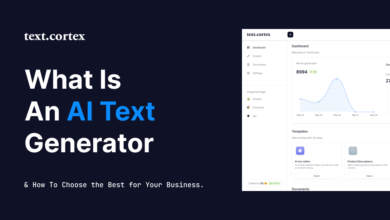Digital Real Estate In today’s fast-paced digital age, investment landscapes are rapidly evolving, and new asset classes are emerging. One of the most talked-about new frontiers is digital real estate. Owning virtual property may sound futuristic or even far-fetched, but it has quickly become a mainstream investment strategy for individuals and businesses. This article will explore digital real estate, why it’s gaining popularity, how investors can get involved, and what the future holds for this exciting new asset class.
What is Digital Real Estate?
Digital real estate refers to assets that exist in virtual spaces rather than physical locations. These assets can take various forms, including websites, domain names, social media accounts, digital ad spaces, and virtual land in online environments like the metaverse. Anything that holds value and occupies “space” online can be considered digital real estate.
Like traditional real estate, digital real estate can be bought, sold, developed, and rented to generate income. Websites with high traffic, popular social media accounts, and valuable domain names can be sold for significant profits. Similarly, virtual land and properties in metaverse platforms such as Decentraland, The Sandbox, and Somnium Space have grown in value and are attracting real-world investors.
Why Digital Real Estate is Gaining Popularity
The digital revolution has created new avenues for wealth generation, and digital real estate is at the forefront of this trend. Several factors contribute to its growing popularity:
- Low Barrier to Entry
Unlike physical real estate, which requires substantial capital and is often regulated by complex legal frameworks, digital real estate is more accessible. Anyone with internet access can purchase a domain name, set up a website, or create a social media profile with relatively low startup costs. This accessibility has democratized real estate investing, allowing even small investors to participate. - High Returns on Investment
Many digital assets appreciate value over time, especially if they are well-maintained or developed effectively. A premium domain name, for instance, can be purchased for a few dollars and sold years later for thousands or even millions. Similarly, a popular website or social media account can generate significant passive income through advertising and sponsorship deals. - Growing Digital Economy
With more businesses moving online, the demand for high-quality digital spaces is rising. E-commerce, online advertising, and remote work have all increased the value of digital real estate. As companies seek ways to reach online audiences, owning premium digital assets is becoming profitable. - Metaverse Expansion
The metaverse, a virtual universe where users can interact with each other in a 3D environment, is adding a new dimension to digital real estate. Platforms like Decentraland and The Sandbox allow users to buy, sell, and build on virtual land. Major companies like Nike, Gucci, and Adidas have already invested in metaverse real estate, showing that digital land is now a viable asset class. - Scalability and Flexibility
Unlike physical properties, which are limited by location and space, digital properties can be scaled infinitely. A website can have unlimited visitors, and social media accounts can reach a global audience. Digital real estate assets can be adapted, expanded, and monetized in various ways, making them highly versatile investments.
Types of Digital Real Estate
There are several forms of digital real estate, each with unique characteristics and investment opportunities. Here are some of the most common types:
1. Domain Names
Domain names are essentially the “addresses” of websites. Premium domain names (like “business.com” or “hotels.com”) are precious because they are easy to remember and attract significant web traffic. The domain name market operates similarly to physical real estate, where unique, high-demand addresses can be bought, sold, and leased. A good domain name can fetch millions of dollars, especially if it aligns with popular search terms or industry niches.
2. Websites
A website is one of the most versatile forms of digital real estate. From blogs and e-commerce sites to informational platforms and community forums, websites generate revenue through ads, affiliate marketing, or direct sales. Successful websites with high traffic can become valuable assets that produce consistent income. Many investors purchase or build websites to flip them for a profit, similar to how investors “flip” houses.
3. Social Media Accounts
Social media accounts with large followings represent another form of digital real estate. Influencers and brands can monetize their accounts through sponsorships, ads, and affiliate marketing. A highly engaged audience on platforms like Instagram, TikTok, or YouTube can turn a social media profile into a lucrative digital asset. Some entrepreneurs and marketers even buy social media accounts, grow their followers, and then sell them at a premium.
4. E-Commerce Stores
E-commerce sites, especially those with established brand recognition and steady revenue, are another profitable form of digital real estate. Online stores can be bought and sold;; som investors purchase underperforming stores to optimize and resell them. With the rise of platforms like Shopify and Etsy, starting an e-commerce store has never been easier, creating more opportunities for digital real estate investments.
5. Virtual Land in the Metaverse
Virtual land is a newer form of digital real estate made possible by blockchain technology. Platforms like Decentraland, The Sandbox, and Cryptovoxels allow users to purchase parcels of virtual land that can be developed or rented out. Virtual land is an attractive investment for brands and influencers, enabling them to create immersive experiences and reach audiences uniquely. Metaverse properties are already fetching high prices, with some plots selling for hundreds of thousands of dollars.
6. Digital Ad Space
Digital ad space includes any area online where advertisements can be displayed. From banner ads on popular websites to ad placements in mobile apps, digital advertising space is in high demand. Owning high-traffic high-traffic websites or apps can yield significant revenue from ad placements. Companies like Google AdSense and affiliate networks make it easy for digital property owners to monetize their spaces through advertisements.
How to Invest in Digital Real Estate
Investing in digital real estate requires a different approach than traditional real estate. Here are some steps for getting started:
- Choose Your Niche
Decide what type of digital real estate you’re interested in. Each category has pros and cons, so consider factors like the technical expertise required, startup costs, and potential returns. For example, domain names require less maintenance than websites, but finding a valuable name can be challenging. - Research the Market
Understand market trends and potential demand. For instance, if you’re investing in domain names. If you’re considering virtual land, study the top metaverse platforms and their user demographics. Doing thorough market research will help you make informed investment decisions. - Start Small
If you’re new to digital real estate, consider starting with a small investment. Buy a domain name or launch a simple website to test the waters. As you gain experience, you can explore more significant investments like buying established websites or virtual land. - Focus on Traffic and Engagement
Traffic and user engagement are key factors determining the value of websites and social media accounts. Strategies such as search engine optimization (SEO), content marketing, and social media advertising can help increase traffic, making digital assets more valuable. - Explore Monetization Options
Monetizing your digital real estate is essential for generating income. Common strategies include display ads, affiliate marketing, sponsored content, and selling products or services. Choose monetization options that align with your asset type and audience. - Consider Flipping or Holding Long-Term
Like physical real estate, digital assets can be held long-term for passive income or “flipped” (bought and then quickly sold) for a profit. Determine your investment strategy based on your financial goals and risk tolerance.
The Future of Digital Real Estate
As the digital economy grows, so will opportunities in digital real estate. The rise of the metaverse is likely to drive demand for virtual land, while technological advancements may lead to new types of digital assets. Blockchain technology is also expected to play a pivotal role in the ownership and trading of digital real estate, offering more secure, transparent transactions.
In addition, as more businesses and individuals recognize the value of a solid online presence, the demand for websites, social media accounts, and premium domain names will continue to increase. The shift towards a digital-first world suggests that digital real estate is more than just a trend—a viable investment here to stay.
Conclusion
Digital real estate is transforming how we think about property, ownership, and investment. From websites and social media accounts to virtual land and digital ad spaces, digital assets offer many opportunities. While it requires a different approach than traditional real estate, digital real estate’s potential returns and scalability make it an appealing option for those looking to diversify their portfolios.
As with any investment, success in digital real estate requires research, strategic planning, and patience. However, the accessibility and growing demand make it an exciting space with long-term potential. The rewards can be substantial for those willing to adapt to this new digital frontier.




